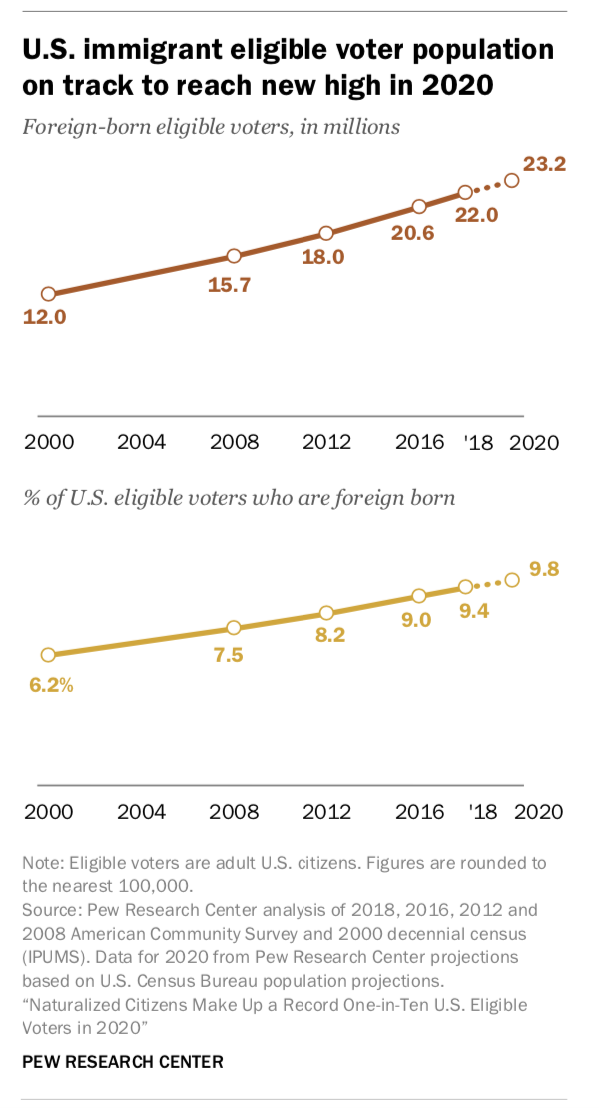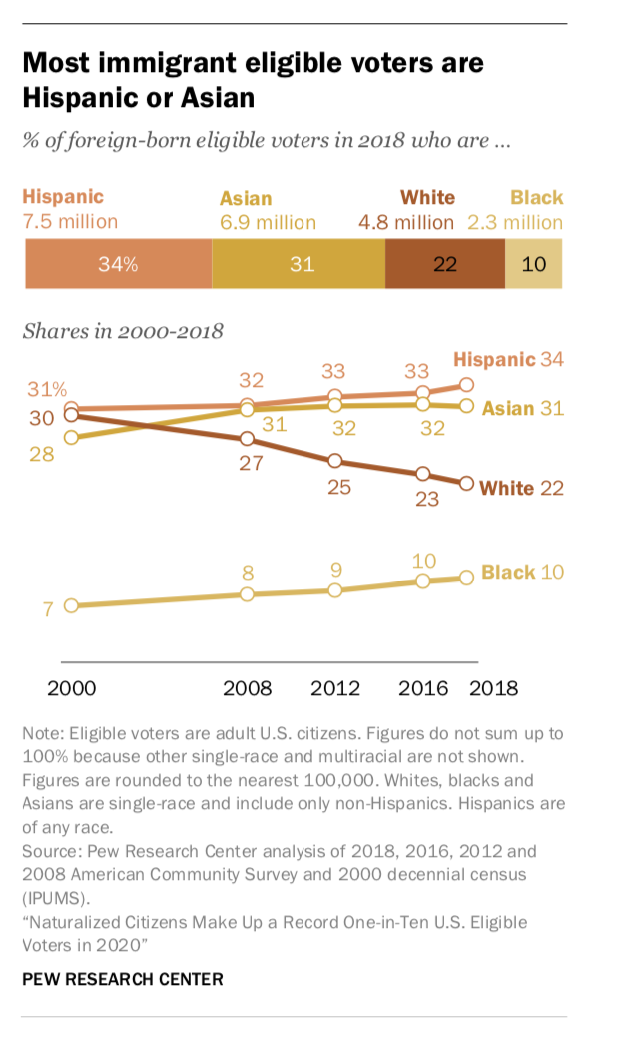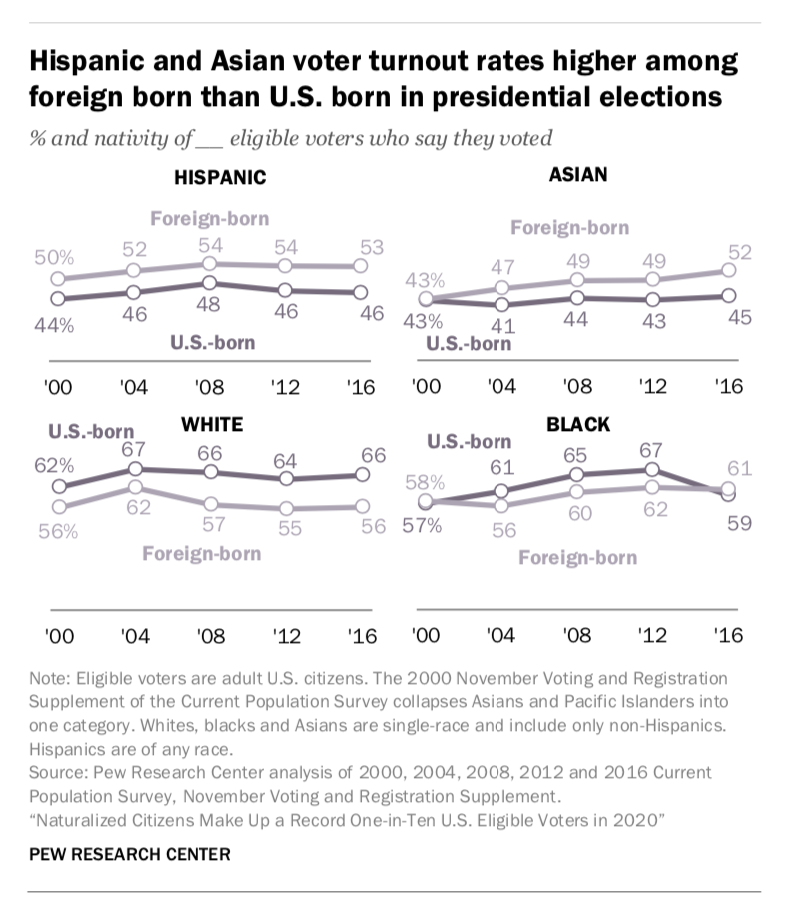

(Photo by BRENDAN SMIALOWSKI/AFP/Getty Images)
A Pew Research study released on Wednesday afternoon presented a comprehensive look at immigrant voters in the United States, concluding that “more than 23 million U.S. immigrants will be eligible to vote in the 2020 presidential election, making up roughly 10% of the nation’s overall electorate—both record highs.”
The Pew analysis was based on U.S. Census data.


“The number of immigrant eligible voters has increased steadily over the past 20 years, up 93% since 2000. By comparison, the U.S.-born eligible voter population grew more slowly (by 18%) over the same period, from 181 million in 2000 to 215 million in 2020,” Pew noted in its study.


“The nation’s immigrant voters have diverse backgrounds. Most immigrant eligible voters are either Hispanic or Asian, though they hail from countries across the globe. Immigrants from Mexico make up the single largest group,at 16% of foreign-born voters. More than half (56%) live in the country’s four most populous states: California, New York, Texas and Florida. Two-thirds have lived in the U.S. for more than 20 years and 63% are proficient in English,” Pew added.


A media release published by Pew also shared these findings:
- Most immigrant eligible voters are Hispanic or Asian. At 7.5 million, Hispanics account for 34% of all immigrant eligible voters, while the 6.9 million Asian immigrant eligible voters make up 31% of the foreign-born electorate. White immigrant eligible voters (4.8 million) are the third largest racial and ethnic group, making up 22% of the immigrant electorate. Black immigrant voters (2.3 million) make up the smallest share of the immigrant electorate, though the group’s share has grown from 7% in 2000 to 10% in 2018.
- Immigrants make up sizable shares of Asian and Hispanic eligible voters. Two-thirds (67%) of Asian eligible voters are immigrants, while a quarter of Hispanic eligible voters are immigrants. This somewhat reflects the overall populations of these two groups, as 77% of Asian adults and 46% of Hispanic adults are immigrants. By contrast, immigrant shares among black eligible voters (8%) and white eligible voters (3%) are far lower. Immigrants are smaller in number among the adult populations of these groups, making up roughly 12% of black adults and 5% of white adults.
- Mexican and Filipino immigrants are the largest groups among foreign-born eligible voters. The countries of birth of immigrant eligible voters are varied and highlight the group’s diversity. There are 3.5 million immigrant eligible voters from Mexico, more than from any other country. And 1.4 million are from the Philippines, the second largest immigrant eligible voter group. Following Mexico and the Philippines are India, China, Vietnam, Cuba, Korea, the Dominican Republic, Jamaica and El Salvador. Together, these 10 birth countries account for about half of all immigrant eligible voters.
- U.S. immigrants are rising in number, but just half are eligible to vote. The share of immigrants who are eligible to vote varies considerably by race and ethnicity. Fewer than half (38%) of Hispanic immigrants are eligible voters, but this share has increased since 2000. More than half of black and Asian immigrants (57% each) are eligible to vote. About six-in-ten white immigrants are eligible voters.
The full report is below. There is a lot of very important data here.


